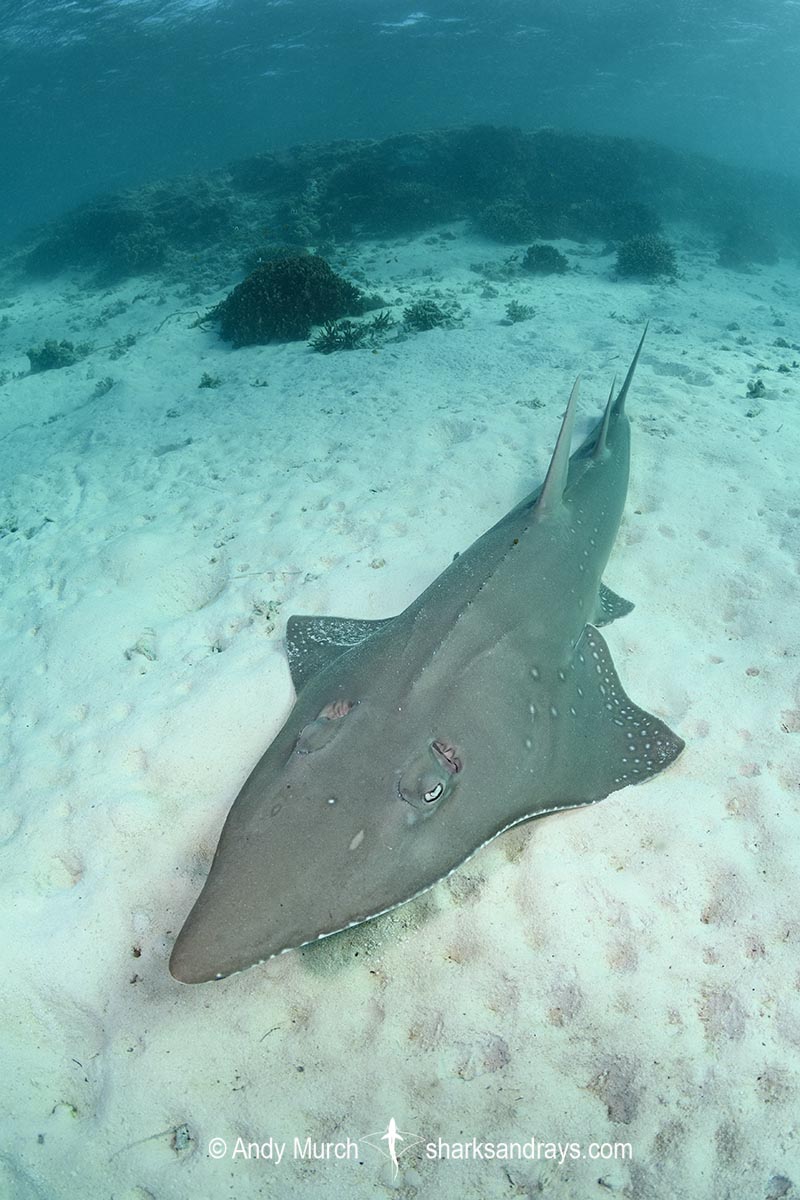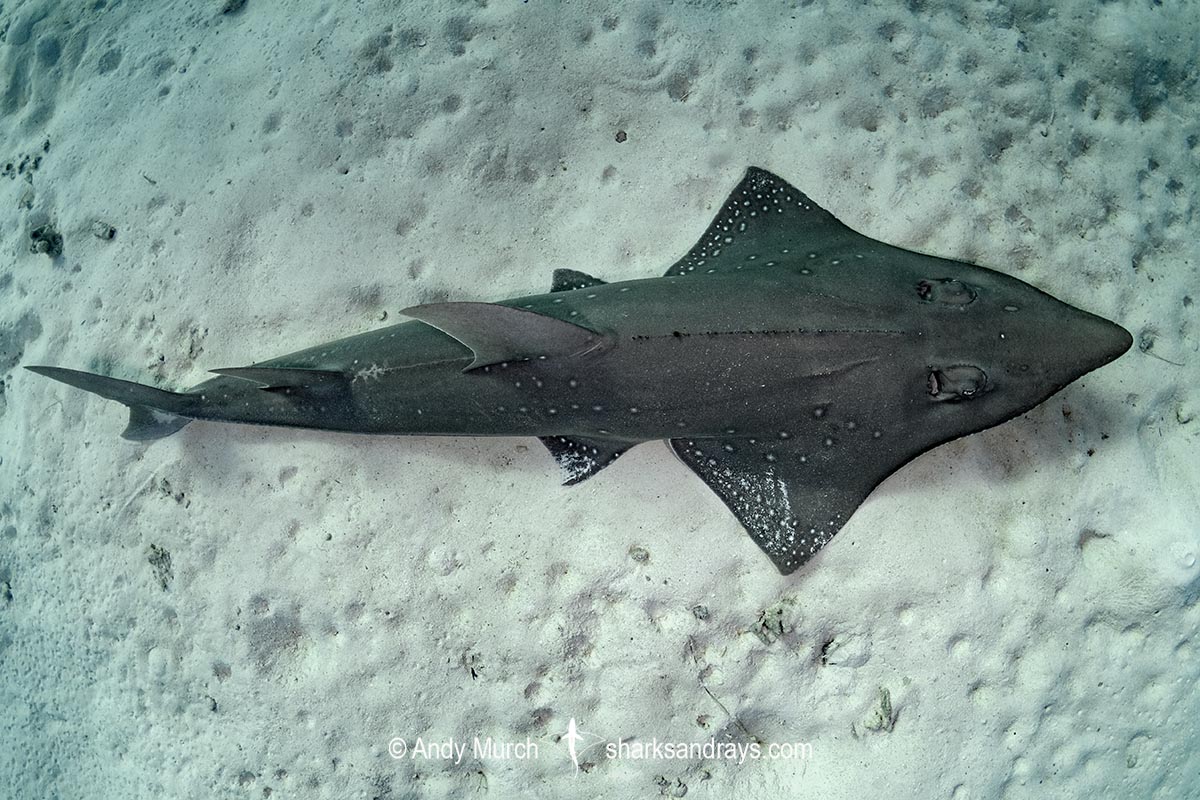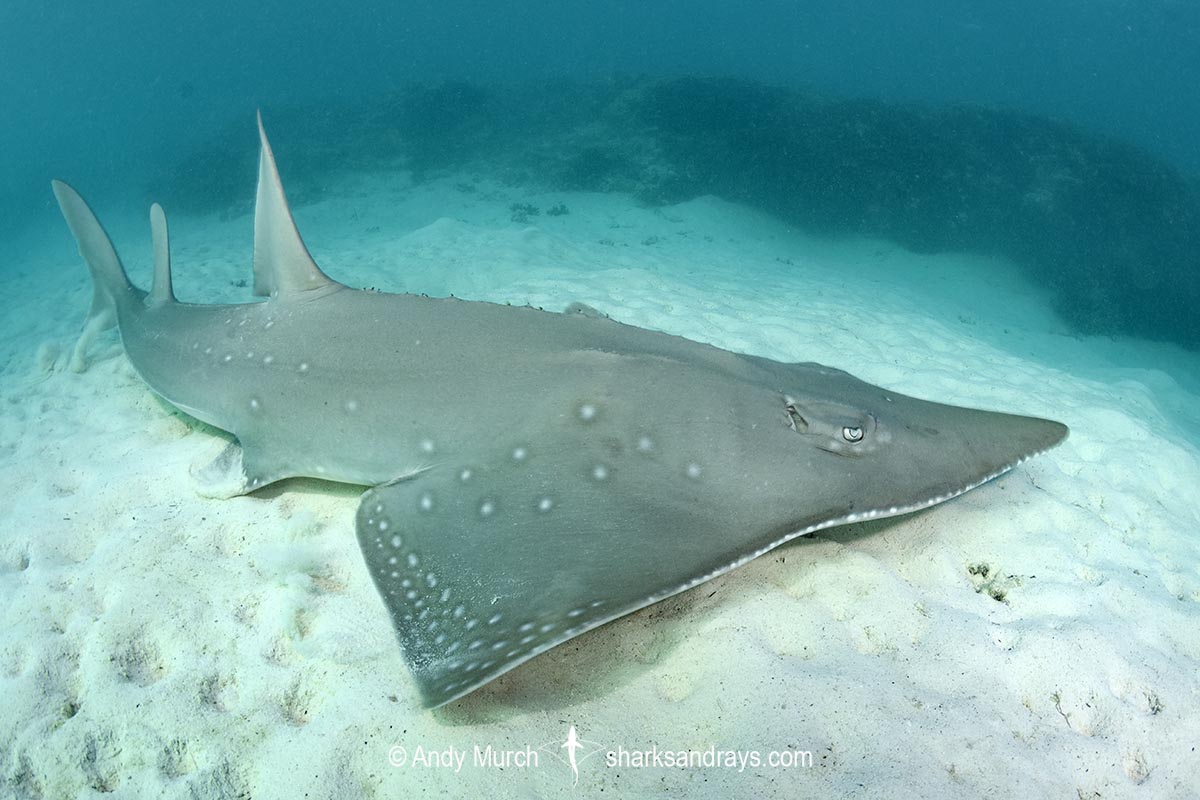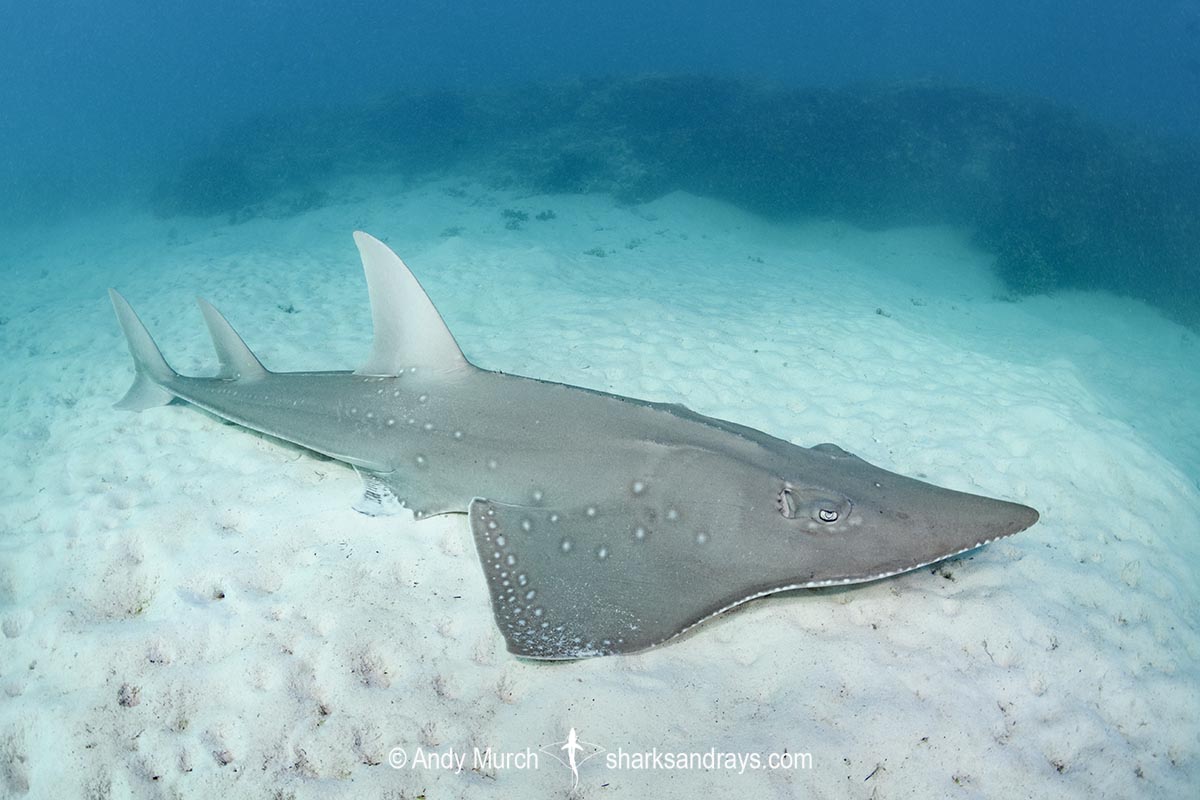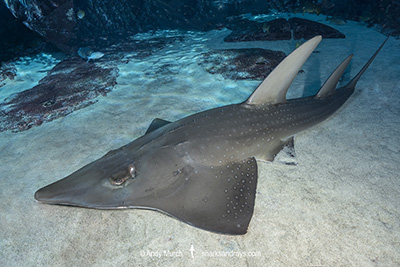Common names
Bottlenose Wedgefish, Whitespotted Guitarfish, Whitespotted Wedgefish.
Binomial
Rhynchobatus australiae.
Synonyms
Rhynchobatus djiddensis australiae.
Identification
A large wedgefish with an acutely pointed, ‘bottle-shaped’ snout. Snout length 3.4-4.4 x orbit length. Eyes large. Spiracles with 2 prominent, equally-sized skin-folds. Anterior margins of disc weakly undulate. Pectoral fin apices angular, posterior margins straight or weakly concave. Small, low thorns present along midline, in 2-3 short rows on shoulders, and around eyes and above spiracles.
Dorsal fins tall and strongly falcate. First dorsal fin much larger than second, origin slightly posterior to pelvic fin origins. Caudal fin large with a well-defined lower lobe. Lateral keel present along posterior flank to caudal base.
Colour
Dorsum pale grey to brown, with 2-4 sparse rows of small white spots along flanks. Small (approximately eye-sized) dark ocelli sometimes present on flank above pectoral fin, with 3 white spots above and 2 below. Markings may be indistinct or completely absent. Ventrum white, often with small dark spots near tip of snout.
Size
Maximum length 300cm. Size at birth 46-50cm.
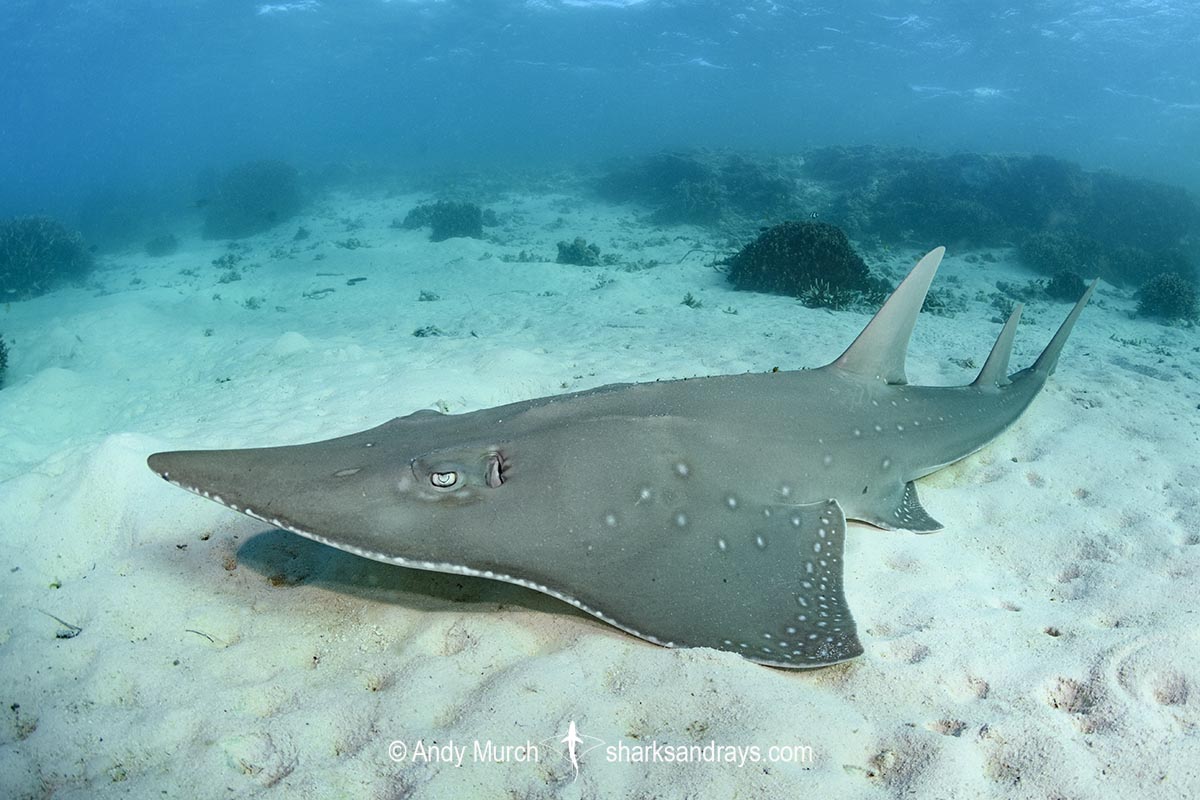
Conservation Status
CRITICALLY ENDANGERED
The Australian Wedgefish is a relatively wide-ranging species, but it produces small litters with a generation length of about 15 years. As well as low productivity, the fins of wedgefishes and giant guitarfishes are considered the best quality fins for sharkfin soup, leading to high demand and heavy depletions in most areas. The only region where the Australian wedgefish has some respite is within Australian waters, but this is not a substantial part of this species range.
Catch data indicates that globally wedgefish numbers have been depleted by more than 80% in the last 45 years.
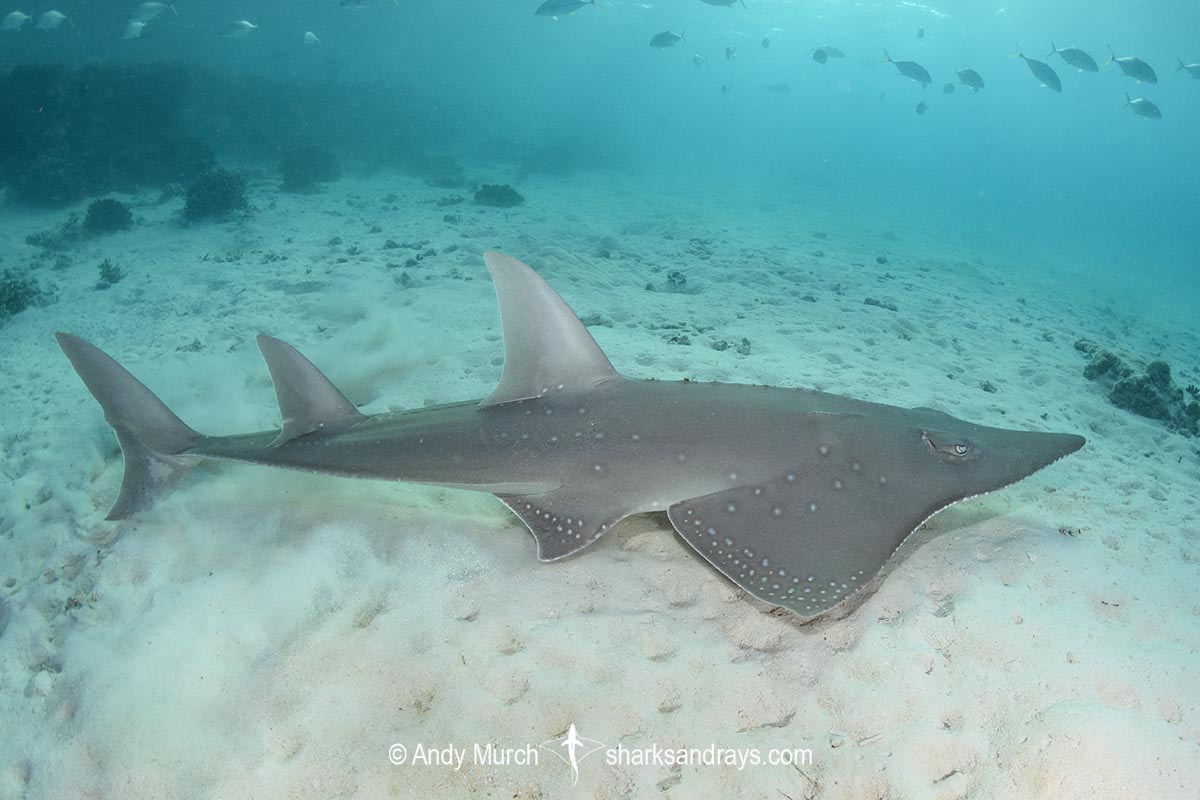
Habitat
Tropical seas. Demersal on soft substrates and coral reefs. From close inshore to at least 60m.
Distribution
Ind0-West Pacific. Recorded from Mozambique through the Western Indian Ocean, the Arabian Sea, and throughout Southeast Asia from Taiwan to northern Australia, and east to the Solomon Islands.
Reproduction
Aplacental lecithotrophic viviparous. Litter size 7-19.
Diet
Feeds on demersal fishes, crustaceans, and molluscs.
Behavior
Known to congregate near reef sites in eastern Australia.
Reaction to divers
Generally moves away if approached closely.
Diving logistics
Due to overfishing, the bottlenose wedgefish is rarely encountered outside of Australia. Within Australia, it is commonly encountered mostly at dive sites in Queensland such as Manta Bommie near Brisbane.
What’s new
View our full list of updates
Similar species
Whitespotted Wedgefish Distinguishable by slightly straighter anterior margins of disc, larger ocelli, and denser covering of white spots running in rows from ocelli to tail.
Smoothnose Wedgefish Distinguishable by straighter anterior margins of disc, more broadly rounded snout tip, and larger ocelli.

